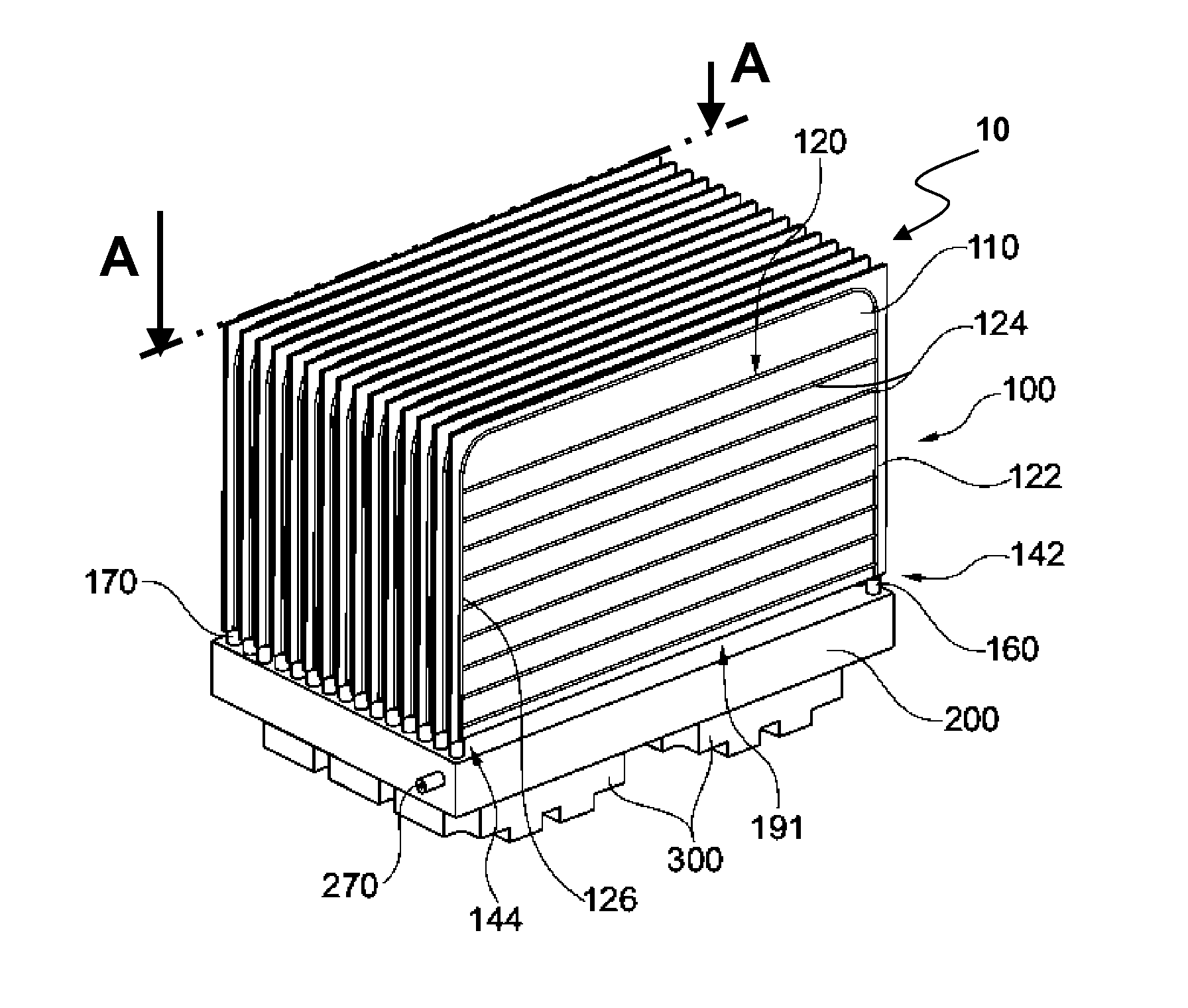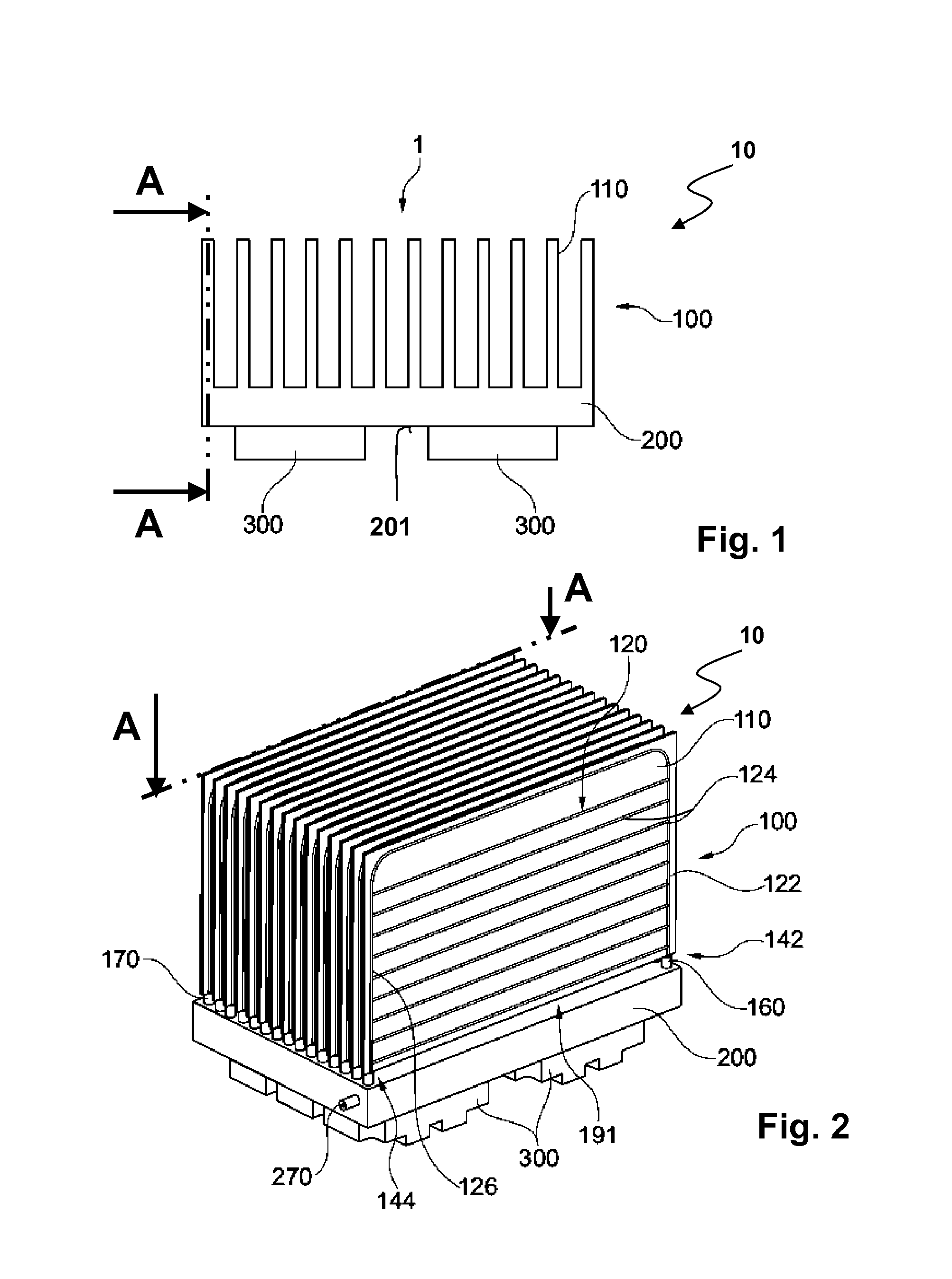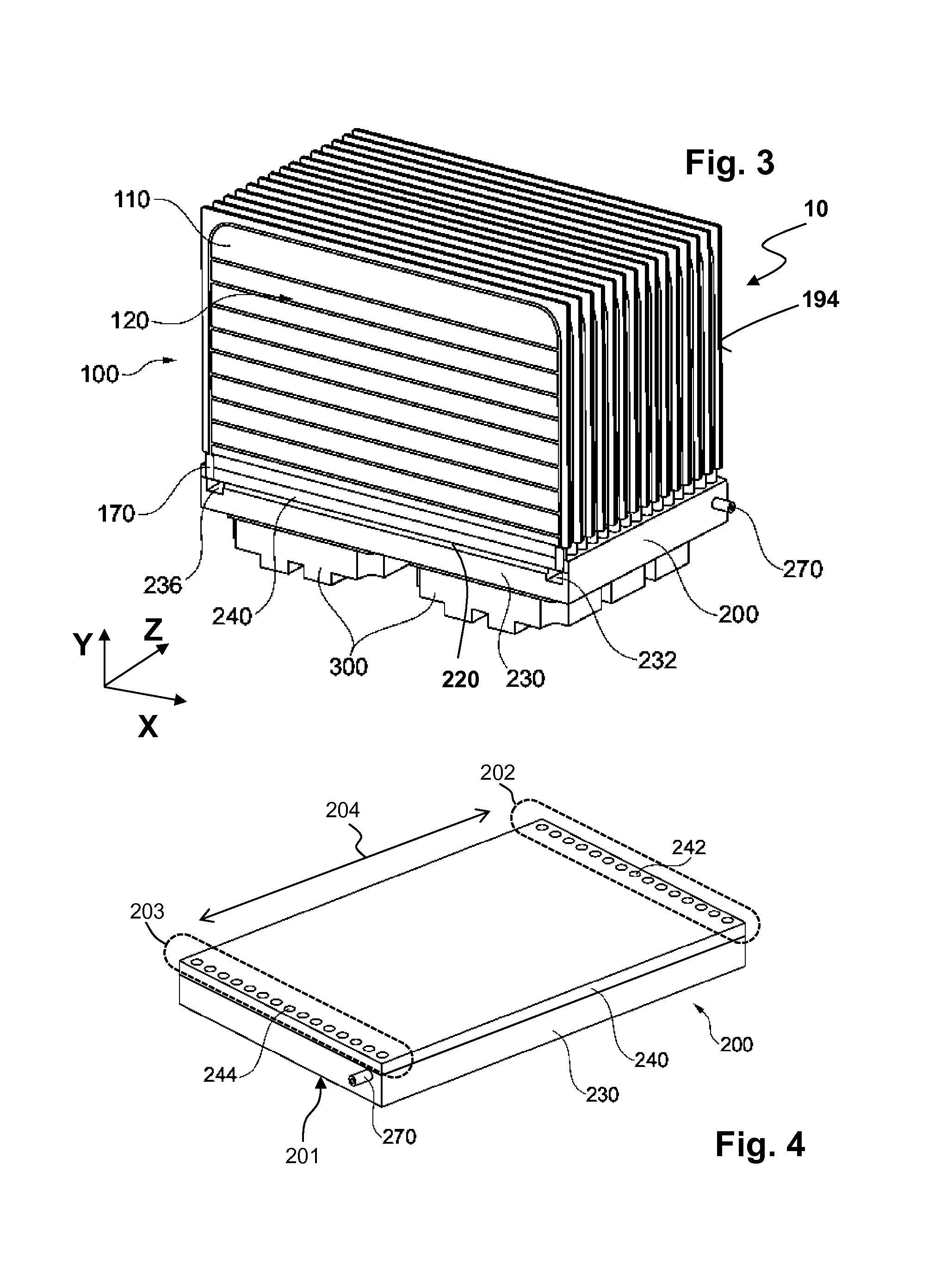Two-phase cooling system for electronic components
a technology of electronic components and cooling systems, applied in the direction of laminated elements, semiconductor/solid-state device details, lighting and heating apparatus, etc., can solve the problems of increasing the amount of undesired waste heat that needs to be extracted, increasing the power density, and increasing the heat flux of such electric installations
- Summary
- Abstract
- Description
- Claims
- Application Information
AI Technical Summary
Benefits of technology
Problems solved by technology
Method used
Image
Examples
Embodiment Construction
[0025]Exemplary embodiments of the present disclosure can simplify the mechanical connection in between the roll-bonded panels and the base plate of a two-phase thermosiphon such that a more economic manufacturing process is achievable.
[0026]An exemplary embodiment of the two-phase heat exchanger according to the disclosure for cooling at least one of an electronic and / or an electric component according to the disclosure includes a condenser body that is thermally connected to an evaporator body. The condenser body includes a roll-bonded panel where a first channel for a phase-changing working fluid is arranged in between a first and a second sheet such that a first connection port delimits the first channel at one end and that a second connection port delimits the first channel at another end. The first sheet is connected to the second sheet by roll-bonding such that a roll-bonded panel is formed. The evaporator body includes a second channel, wherein the second channel is delimite...
PUM
 Login to View More
Login to View More Abstract
Description
Claims
Application Information
 Login to View More
Login to View More - R&D
- Intellectual Property
- Life Sciences
- Materials
- Tech Scout
- Unparalleled Data Quality
- Higher Quality Content
- 60% Fewer Hallucinations
Browse by: Latest US Patents, China's latest patents, Technical Efficacy Thesaurus, Application Domain, Technology Topic, Popular Technical Reports.
© 2025 PatSnap. All rights reserved.Legal|Privacy policy|Modern Slavery Act Transparency Statement|Sitemap|About US| Contact US: help@patsnap.com



